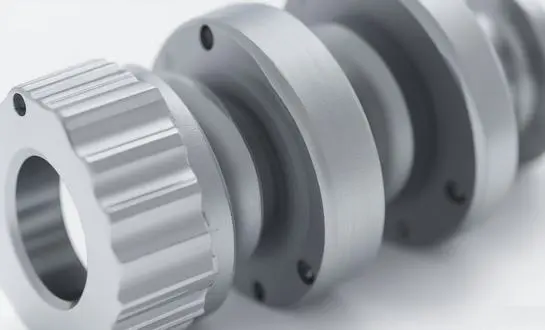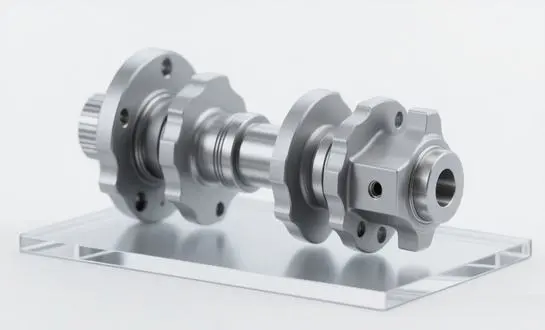Impact on Paper Quality: Rubber vs. Steel
The material composition of the products plays a significant role in determining the final quality of paper products. Rubber-coated and steel rolls each offer unique advantages and challenges in this regard.
Surface Characteristics and Paper Smoothness
The exceptional consistency with which rubber-coated guide rolls meet the paper surface is well-known. More even pressure distribution is achieved because rubber's elasticity enables it to adjust to small imperfections in the paper web. Papers that need to be very smooth, such speciality grades or fine printing papers, benefit greatly from this quality.
However, steel guide rolls provide far more accuracy and consistency in dimensions. Their inflexible surface guarantees constant nip pressure across the whole paper web, an essential component for preserving consistent calliper and density. When handling high-speed activities that need low deflection to ensure product quality, steel rollers are an excellent choice.
Impact on Paper Moisture Content
Whether you choose with steel or rubber guide rolls might have an effect on the paper's moisture level. The increased heat produced by rollers covered with rubber is likely due to their somewhat greater coefficient of friction. Because of the increased moisture evaporation from the paper web caused by this extra heat, the ultimate moisture content of the product may be affected.
Due to their reduced coefficient of friction, steel guide rolls produce less heat while in use. As an example, this quality might be useful in the manufacturing of speciality papers or other processes where the success of the coating or conversion steps depends on precisely controlling the moisture content.
Effect on Paper Web Tension
An important consideration in papermaking is web tension management, which is in turn affected by the product material choice. When it comes to maintaining constant web tension, rubber-coated rollers are usually your best choice, particularly in parts of the paper machine where slippage is an issue.
The rigidity of steel guide rolls allows for more predictable and reliable tension management, at the expense of their natural grip. For high-speed processes or those with sensitive paper grades to fluctuations in tension, this stability might be crucial.
Maintenance Costs: Long-Term Considerations for Mills
It is essential to think about the maintenance implications and expenses in the long run when deciding between steel guide rolls and those with a rubber coating. The lifespan, frequency of replacement, and total lifetime cost of these materials are impacted by their unique properties.
Wear Resistance and Replacement Frequency
The extraordinary durability of steel guide rolls has brought them great acclaim. They are able to endure the harsh conditions of papermaking for long periods of time because of their resilience and resilience. Steel rollers typically have a useful life of many years before they need to be repaired or replaced. Less downtime and cheaper replacement costs during the equipment's lifetime are the results of its lifespan.
Although rubber-coated guide rolls are superior than steel in terms of paper handling, they usually don't last as long. Wear is more likely to occur on the softer rubber surface, particularly in situations involving high speeds or abrasive materials. On the other hand, it is usually easier to anticipate how rubber rollers will wear and hence plan maintenance accordingly.
Cleaning and Contamination Resistance
The maintenance requirements for cleaning and preventing contamination differ between rubber and steel guide rolls. Steel rolls generally have a smoother surface that is less prone to accumulating paper dust, fibers, and other contaminants. This characteristic can result in reduced cleaning frequency and lower associated labor costs.
Rubber-coated rolls, due to their slightly tacky surface, may require more frequent cleaning to prevent buildup of contaminants. However, they often offer better resistance to chemical cleaning agents, which can be an advantage in mills that use aggressive cleaning protocols.
Refurbishment and Reconditioning Costs
When it comes to refurbishment, steel guide rolls often have a cost advantage in the long run. The hard surface of steel rolls can be reground or refinished multiple times, extending their useful life significantly. This ability to recondition steel rolls can lead to substantial cost savings over time, as it reduces the need for complete replacement.
Rubber-coated guide rolls, while generally less expensive initially, may require more frequent replacement or re-covering. The process of re-covering a rubber roll can be more complex and time-consuming compared to reconditioning a steel roll. However, advancements in rubber compound technology have led to more durable coatings that can extend the time between replacements.
Optimizing Roll Selection for Different Paper Grades
The selection of the product materials should be tailored to the specific requirements of different paper grades. Understanding the unique characteristics of various paper types and how they interact with rubber-coated and steel guide rolls is essential for optimizing production processes and product quality.
Lightweight and Specialty Papers
The product material choice might be especially crucial for the manufacturing of speciality papers and lightweight sheets like tissue or fine printing papers. The use of rubber-coated guide rolls allows for more sensitive handling of these grades. In order to reduce tension and avoid wrinkles, it is essential that the rubber retain better touch with the surface of the paper. Rubber's conformability helps to do just that.
While making speciality technical papers or other items where exact dimensional control is critical, steel guide rolls can be the way to go. Essential for papers with tight tolerance requirements, their stiffness guarantees continuous nip pressure and aids in maintaining uniform calliper throughout the web.
Heavy-Duty and Packaging Grades
When deciding between steel and rubber guide rolls, the former is usually preferred for heavier paper grades like paperboard or packaging materials. The increased stresses and loads encountered with these grades are well-managed by the sturdy steel rollers. Consistent quality is maintained even in high-speed production conditions because to the shape-and performance-preserving properties of steel guide rolls.
Still, there are several steps in making heavy-duty paper that benefit from rubber-coated rolls, including when there's a need for more grip or vibration dampening. In certain cases, the optimal combination of performance and durability may be achieved by employing steel rollers for main guiding and rubber-coated rolls in particular vulnerable locations.
Coated and High-Gloss Papers
The production of coated and high-gloss papers presents unique challenges in the product selection. These grades often require extremely smooth surfaces and are sensitive to marking. In such cases, rubber-coated guide rolls can be advantageous due to their ability to distribute pressure evenly and minimize the risk of surface impressions or marking.
However, the heat generated by rubber rolls can potentially affect the coating or gloss finish. In these situations, temperature-controlled steel rolls or specially formulated rubber compounds designed for low heat generation may be necessary to maintain product quality while benefiting from the precision of steel or the conformability of rubber.
Conclusion
All things considered, there is no universally correct answer when asked to choose between steel guide rolls and those that are covered with rubber. The mill's operating circumstances, the particular paper quality being produced, and the maintenance implications in the long run must all be carefully considered. To maximise quality, efficiency, and cost-effectiveness, paper makers optimise their manufacturing processes by thoroughly examining these elements and knowing the particular features of each material.
For expert guidance on selecting the right products for your specific application or to learn more about our comprehensive range of mill rolls and support services, please don't hesitate to contact us at oiltools15@welongpost.com. Welong is committed to providing tailored solutions that meet the diverse needs of the paper and metal processing industries.





